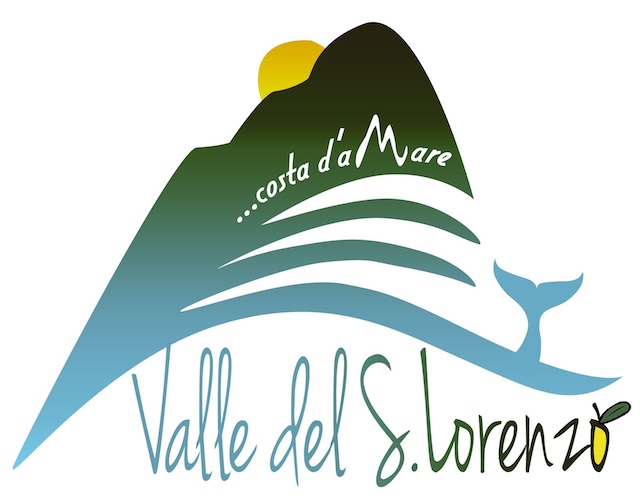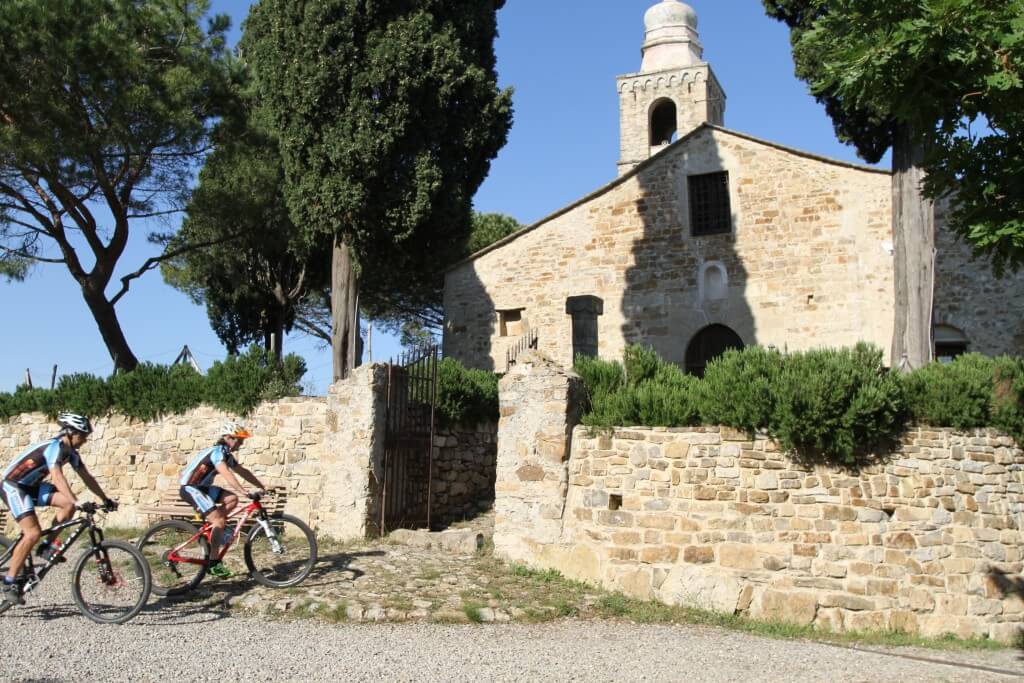Duration: 2 hours and 30′
Difficulty: T/E
Elevation gain: 250 meters
From the baroque oratory of Saint Lawrence (or of the Mercy), located within the homonymous village near the crossing of the Aurelia, following briefly the main road toward Costarainera-Cipressa Lingueglietta and, after a hundred meters, on the left, reaching the road chart that signals the beginning of the Municipality of Costarainera.
Reached this point, moving along the edge of the carriage road for a few meters until to take a steep concrete climb opening on the left and getting lost in a cloud of houses and buildings; moving without ever leaving the main direction until arriving quickly along the old mule track that winds between uncultivated land, olive trees and countryside.
Learn more
Following the main route, it will take us to double the scarce remains of the Tower “of Falodio” (one of many towers and defensive guarded places garrisons built along the coast and in the inland villages at the time of Turkish-Barbaresque pirates landings, during the sixteenth and seventeenth centuries) and within an inhabited of cottages and private residences, which still accompany us once again to the asphalted surface of the road.
Crossed again the road, take the large mule track leading into olive trees just in front of us and, then, move up toward the village. it is the way of St. James – whom it is dedicated the votive shrine located a little higher up – one of those small roads that still innervate the surrounding area and that, during the Middle Ages, linked local people, and not only, to major international routes of pilgrimage: to Rome and the Holy Land or, as in this case, to Santiago de Compostela.
After the climb, in the downvillage, cross the road again and continue along Via San Giacomo or Via Dante (its picturesque deviation) and, thus, reached in the renovated Vittorio Emanuele II Square let’s climb again, taking care to touch the major monuments that enrich the urban grid of Costarainera: the parish church of San Giovanni Battista and the adjacent oratory of San Carlo Borromeo and Holy Trinity (first half of XVIII century), the tower-houses of the center and, finally, through via Sant’Antonio, one of the most scenographic and exciting sites of the whole valley, the ancient church of Sant’Antonio Abate (XII/XIII-XVII/XVIII centuries).
By this extremely suggestive and evocative place move to the left, taking a nice dirt track that follows a middle-coast route of medieval origin (centuries X-XI) and that, in a slow descent, will take us through a forest of pines and a few rarely olive grove, in the thick of the Mediterranean vegetation, up to gaining the entrance to the historical center of Cipressa and one of its oldest areas, the fortified district of “Castle”.
At this point, the alley will descend toward the baroque religious center of the village, the large square in which facing the imposing volumes of the Virgin Mary’s Visitation parish church (1644-1654) and of the oratory of the Holy Annunciation (first half of the XVIII century), or, alternatively, there will be the opportunity to make a detour uphill towards the sixteenth century Tower “of Gallinaro” (fine and well preserved defensive bulwark of the Turkish-Barbaresque landings), which dominates the coast to Sanremo and Beyond. Continuing through the neighborhood of “Martini” and reaching towards the fine house-tower that guarding over it, let’sfind another short trail that descends to the sea.
This narrow street, that forces us to take a short stretch of carriage road to south, takes the field after a hundred meters, on the right, and gives us the opportunity to visit an authentic “villa of delights”, Villa Biener, one of the most significant contemporary art parks of the Western Ligurian artistic panorama that has been conceived and patiently completed by the Hungarian artist and collector Judith Török and her partner and artist Carlo Maglitto.
Leaving the house, its gardens, works and beautiful mosaics and polychrome ceramics, return walking briefly on the carriage road of one of the most famous descents of Italian and international cycling, “la Cipressa”, towards the marine and beaches of Aregai, where meet again the Via Aurelia and an access point to the bike path, which will allow us to close our tour in the village of San Lorenzo al Mare.





